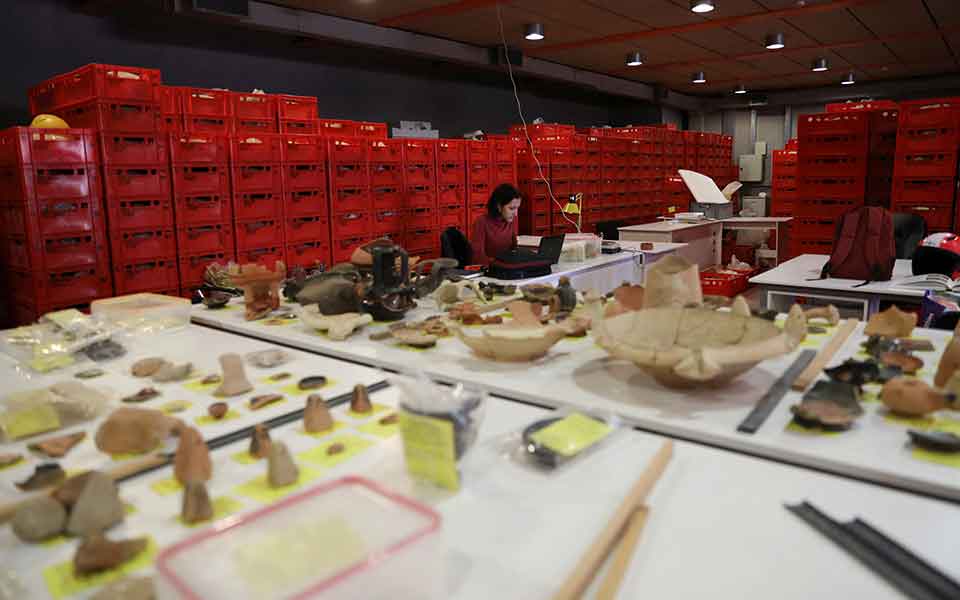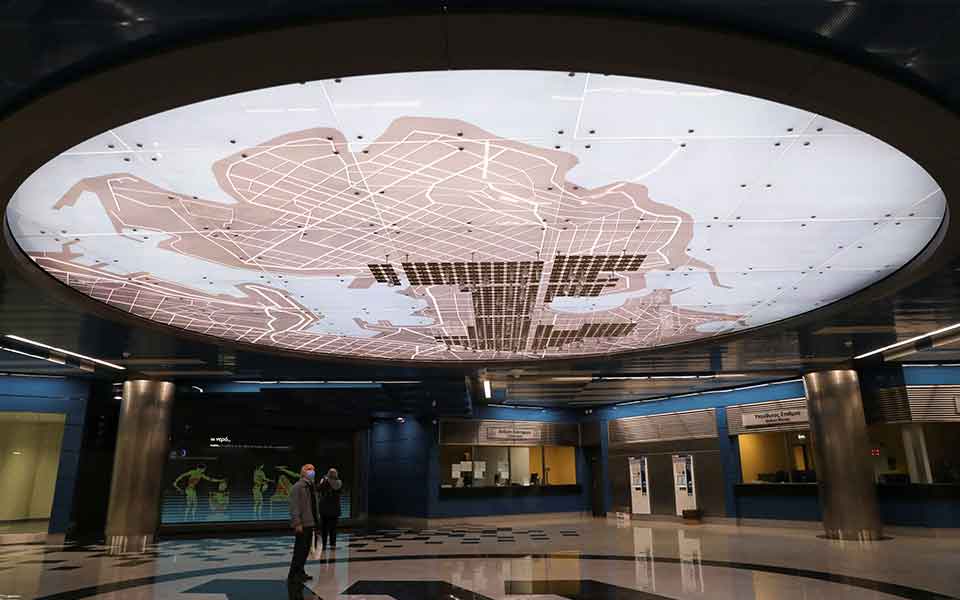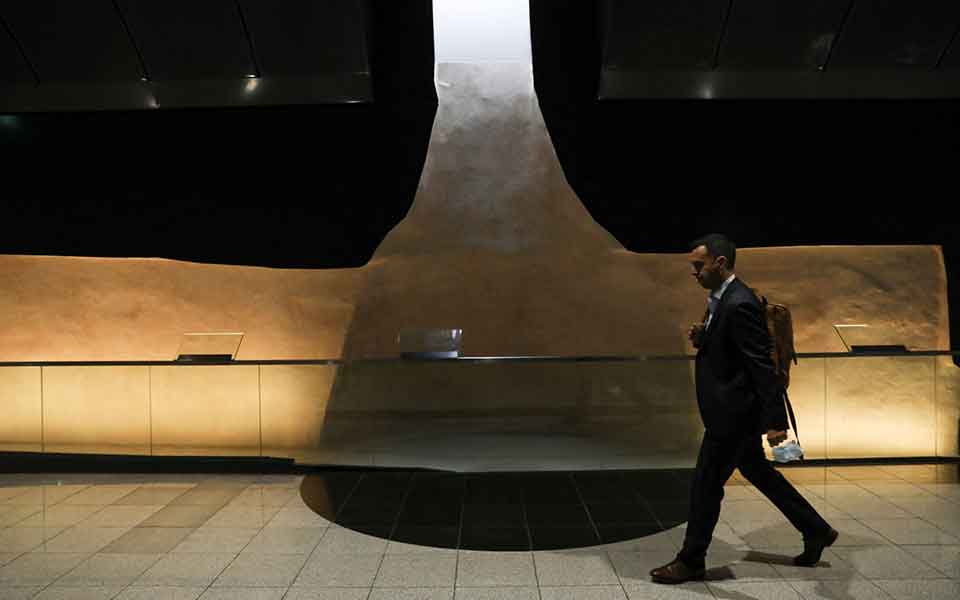By Deborah Kyvrikosaios
In a domed passageway outside Athens, crowds study display panels and look down though glass beneath their feet at a mosaic floor from a 4th century BC house surrounded by ceramics and other domestic objects.
They’re not visitors to a museum, however, but passengers on a new subway line that links Piraeus, the sea port that serves the capital, with its airport.
The mini-exhibition of artifacts, which also features original parts and copies of an ancient irrigation system of wells and cisterns, is embedded in the structure of the terminus at Piraeus, which was inaugurated last month.
Subway builder Attiko Metro worked closely with archaeologists to create it, and the trove represents a highlight of thousands of artefacts found during the line’s construction.
“We are giving the passenger a small taste of an everyday moment in an [ancient] Piraeus house,” said archaeologist Stella Chryssoulaki.
With so much history lying beneath the soil, building underground subway lines in Greece – the first was inaugurated in central Athens in 2000 – has always been a delicate issue.
“We have proven here in Piraeus that [history and modernity] can co-exist. There is always a way,” said Attiko Metro’s project director Evangelos Kolovos, whose teams had to adapt to archaeologists’ needs while not delaying it or exceeding its 730 million euro ($723 million) budget.

© Louiza Vradi / Reuters
Rare finds
Working at a depth of up to 17 meters (56ft), the archaeological excavation spanned ten years and covered 7,500 square meters as six stations and a 7.6-km (4.7-mile) extension tunnel were built.
“We were putting the soil in big bags, removing it carefully, so that we could continue the excavation, and in another place spreading it (out), and we gave the archaeologists the opportunity to check there and remove all the [discoveries],” Kolovos said.
One find in particular still resonates with him.
“They found a small ancient ring. They put it in my hand. I am still touched when I remember this,” he said

© Louiza Vradi / Reuters
In a Piraeus workshop, artefacts – including some retrieved from ancient wells that the archaeologists were lowered into while attached to ropes – fill crates stacked to the ceiling, while broken remnants are spread out on long tables as conservators piece them together.
“We saw… small objects which we didn’t know about, and… are still not sure what a lot of them are used for. A huge field of research has opened up before us,” said Chryssoulaki.
The team were unable to salvage all the cisterns, though similar ones have been dug up in the past. They spent time painstakingly preserving rarer finds, including a wooden door that would have decomposed if exposed to dry air.
For passengers transiting through the port, from where ferries carry tourists to the Greek islands, travel time from the new station to the airport is under an hour. As they pass through, they may now be reminded of other, long-departed travellers.
“On the surface, and under the surface, we will always have all those layers of people who passed through here, lived here, fell in love, fought, and felt pain here,” Chryssoulaki said.
This article was previously published at ekathimerini.com.











